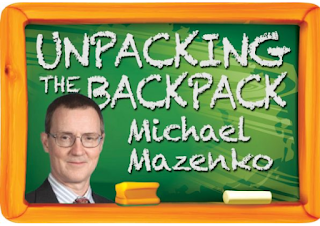Musical theater is back at Cherry Creek High School, and their production of “Mamma Mia” played to packed houses last weekend. Based on songs from Swedish pop band ABBA, this festive musical tells the story of 20-year-old Sophie on a Greek island about to marry her fiance Sky. Sophie doesn’t know her father, but wants him to walk her down the aisle, so unbeknownst to her mother Donna, Sophie invites Donna’s three former boyfriends, and drama ensues.
The lead roles were perfectly cast with Bella Mitchell, bringing an adorable charm and powerful, melodic voice to the role of Sophie. Mitchell, who’s been accepted for musical theater to NYU’s elite Tisch School, put on an impressive performance, masterfully connecting soulful solo scenes to energetic ensemble pieces. “Mamma Mia” has a girls night vibe with Sophie, Donna, and Donna’s lifelong friends Tanya and Rosie, known as the Dynamos, laughing, longing, and loving their way through a tumultuous weekend.
Donna was beautifully played by Miranda Joyce, and her two backup Dynamos literally brightened the stage every time they were on it. Lexi Casey as the sassy, fun-loving Rosie and Eliana Yokomichi as the sardonic thrice-divorced Tanya absolutely owned their roles with vaudevillian-like humor. Yokomichi’s portrayal of Tanya’s clumsy elegance charmed audiences, and her boisterous flirtation with barman Pepper, played by Alex Mitchell, was hilarious. Yokomichi danced across the stage with class and sass in four-inch stiletto heels. “I’d have broken my ankle just walking in those,” one woman in the audience quipped.
The stage was literally filled all night with a huge ensemble of “Dancing Queens,” and Emily Fisher’s choreography led by dance captain Chloe Mazenko was truly a spectacle to behold. During “Voulez-vous” nearly fifty dancers smoothly glided past each other in mesmerizing layered movements, and the true beauty of the scenes was the seemingly natural and effortless interplay of the singers and dancers. Scenes with villagers just spontaneously breaking into song and dance is the magic of well-done musical theater.
The show was an emotional roller coaster from the energetic, joyous “Dancing Queen” to the dramatically artful “Under Attack.” In a poignant mother-daughter scene, Sophie and Donna reflect on the past, singing “Slipping Through My Fingers,” while dancers Catherine Healy and Becca Dwyer performed a poetic ballet, visually mirroring the characters' emotions. It was a hauntingly beautiful scene of love and nostalgia. Moments later Miranda Joyce nearly brought down the house with her rendition of “Winner Takes It All.” Her soaring voicing, filled with soulful angst was a stunning moment, as her suitor Sam, played so smoothly by Jack Diamante, stands stoically across the stage, feeling her pain and longing for connection. “It literally gave me chills,” said Terri Margolies, who saw the show twice.
Donna’s other suitors wonderfully complimented the drama, with senior Caleb Meyerhoff bringing a cool vibe to former musician “Headbanger Harry,” and Hayden Noe filling the stage with his warm “aw shucks” schtick of the kind-hearted Bill. The scene where Noe’s Bill is audaciously, seductively wooed by Casey’s Rosie singing “Take a Chance on Me” was a sassy, saucy, laugh riot. It’s easy to forget these thespians are just high school kids with their mature stage presence.
The set was masterfully designed with the Fine Arts Theater transformed into a small Greek village and taverna, complete with white stucco, blue shutters, and shifting backdrops reflecting the Grecian sky. Associate set designer Dylan List and his crew created a warm, hip Mediterranean vibe, and the audience half-expected the cast to emerge soaking wet from the Aegean. They came close when the groomsmen suited up in scuba gear for a hysterical chorus in “Lay All Your Love on Me.”
Creek theater is an all-student led production, including the exquisitely detailed costumes. It’s no surprise costume designer Sarah Manos is also headed to NYU’s esteemed Tisch School. The directors pulled out all the stops at the end of the show when the entire cast hit the stage for an extended ten-minute dance extravaganza in eye-popping 70s disco costumes for the party anthem “Waterloo.” As confetti fell from the sky, some audience members waving glow sticks and wearing feather boas danced in the aisles. “I’m literally speechless,” said Creek administrator Marcus McDavid, who attended with his two Creek kids. “That was just so fun.”
Burkhart and musical director Sarah Harrison both said of the show, “We just wanted to have fun. We needed to have fun.” Mission accomplished. The thespians of Cherry Creek gave their community a night to remember. With Burkhart in just his third year at Creek, and the school’s seemingly endless line of talented kids, it appears musical theater is in great shape for many years to come.










